Life can come at you fast. One minute you’re sitting there sipping your cup of coffee in the morning, and the next minute you hear the refrigerator go out. And why does it always happen at the most unfortunate and irritating time? It’s like Murphy’s law. Indoor mold growth? It follows the exact same law. One minute your home is fine and the next, you realize those persistent sniffles and brain fog weren’t just seasonal allergies, they were from mold exposure. Curse that fungus!
Just kidding, it has a super important job in nature and doesn’t know any better!
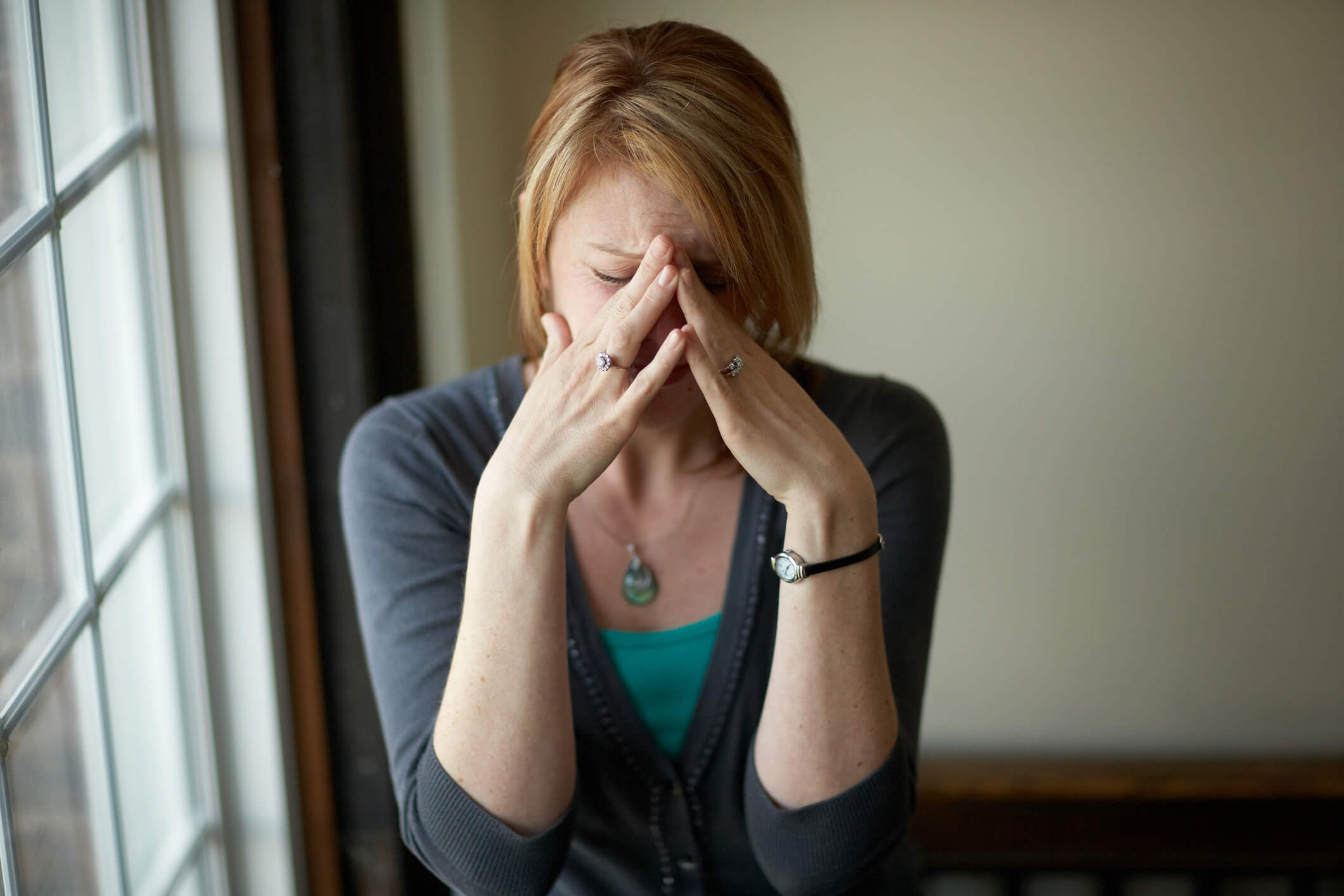
That being said, finding mold growth can make your heart plummet right into your stomach. Questions like the ones below will probably start circulating through your head like a merry-go-round:
"How am I going to keep my family safe?"
"How do I get rid of this mold?"
Or more pressingly, "How am I going to afford this?"
The truth is, insurance is fickle when it comes to mold. Coverage won’t always come to our rescue when we need it, forcing those funds to come straight from out of pocket, and that money isn't always available at the moment. This situation can trigger anxiety, sadness, and uncertainty, which is why we have to focus instead on putting one foot in front of the other and not stress about the seemingly million and one things that need to be accomplished to decontaminate the home.
The key to mold removal is doing what you can when you can. Everyone’s situation is different, so by focusing on increasing our mold knowledge and awareness, we’ll have a roadmap of what should be done to decontaminate a mold home, how to get to that mold-free goal, and what steps can be taken in the interim.
So, whether you’re currently suffering from indoor mold growth or want to create an action plan should a moldy situation pop up in the future, here are five ways to reduce mold exposure in a home as much as possible until remediation can be completed. That way, you can keep yourself and your family as healthy and safe as possible.
But First, Know Your Enemy Before Focusing On Reducing Mold Exposure
Before getting into what you can do to reduce mold exposure, it’s best to go through a crash course on mold so you know why you’re doing what you’re doing.
Mold is a type of fungus with over 100,000 species identified so far. All of these species reproduce by creating microscopic spores that they release into the air.¹’² Picture a dandelion puff releasing those cloud-like seeds into the air, and you’ve got the idea. With so many species and how easily these spores can get around, these "seeds" are pretty much everywhere: throughout nature, in vehicles, on a pet’s fur, and even inside of a home.
A couple of random spores throughout the day don’t cause a problem. The issue arises when one of these spores finds a nice little dwelling inside of your home and starts to grow. This tenacious little spore will then put down roots and start releasing more and more spores into your indoor air. Some species of mold can also produce microscopic toxins called mycotoxins that they also release into the air and are toxic to the human body.³
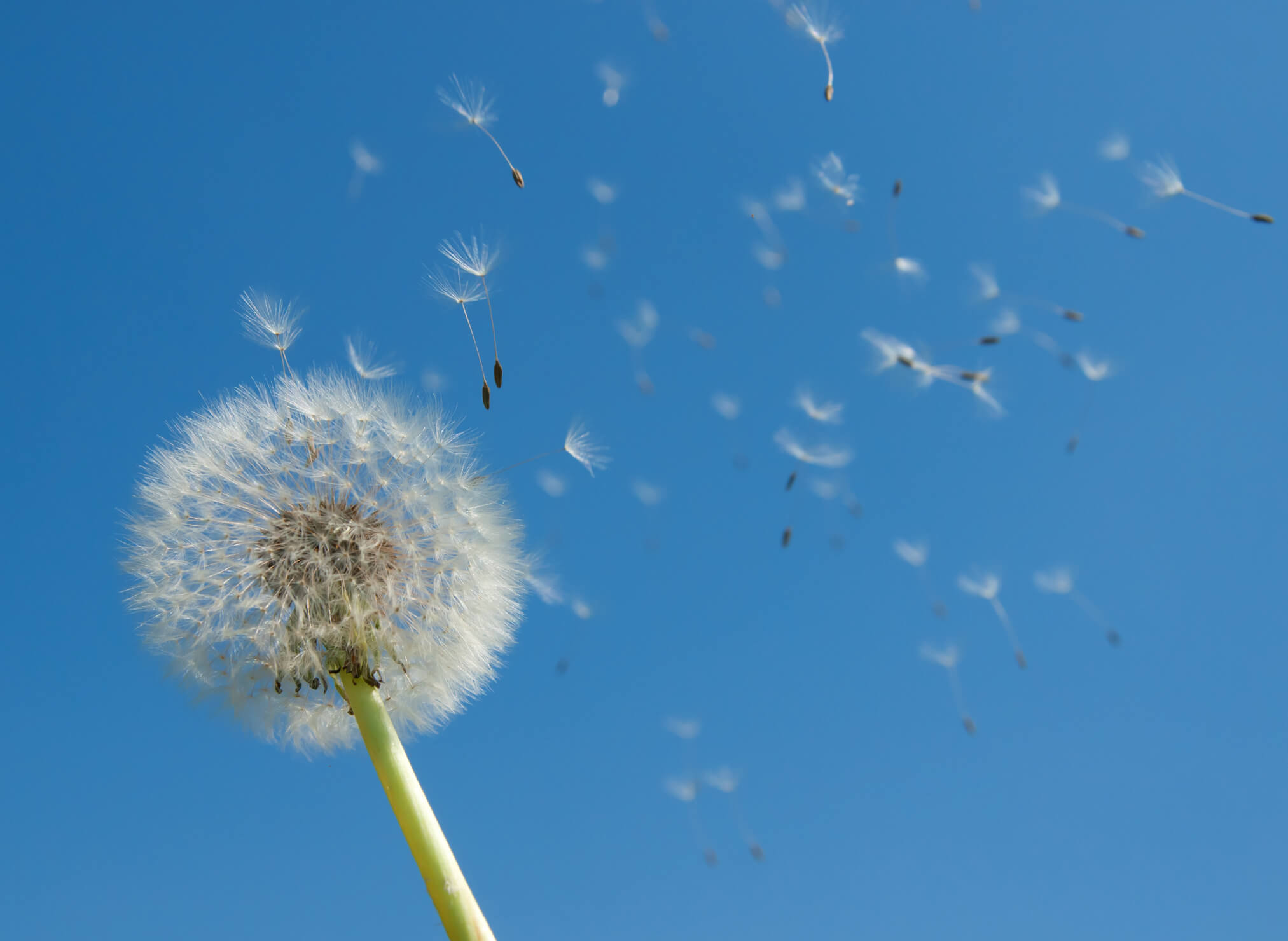
Between the spores and the mycotoxins, the indoor air quality in a home with mold growth takes a drastic hit. As the body is bombarded with these particles, the immune system will be unleashed and tasked with removing as many of the foreign particles as possible. Since the average individual breathes around 20,000 breaths a day, that’s a tall order to fill and often results in a long list of adverse health reactions in those exposed.⁴'⁵’⁶ Unfortunately, anyone with a compromised immune system, pre-existing condition, or developing immune system is even more at risk for developing symptoms.⁷’⁸ At the end of the day, though, you never know how a body will respond to mold exposure.
This impact is why it’s crucial to deal with mold growth correctly and as soon as possible so that exposure stops and the body can heal. Until a comprehensive remediation project can be tackled, it’s important to do what you can to minimize this exposure as much as possible to lighten the toxic load on the body and help the immune system keep up.
Here are five steps you can start with to reduce mold exposure as much as possible.
Reduce Mold Exposure and Improve Indoor Air Quality
1. Channel Your Inner Cinderella: Aka Clean and Clean Some More!
As the mold continues to grow inside of a home, it will continue to release spores and sometimes mycotoxins, depending on the species. All of those microscopic particles aren’t just floating around and hanging out in the air; they’re also sticking to any surface they come into contact with. It's kind of like how lint sticks to a lint roller, but in this case, you can’t throw the dirty part away because all of the surfaces in the home are those pesky sticky sheets.
These surfaces could include couches, plates, glassware, clothing, the Christmas tree, and pretty much anything else that exists in your house. The spores and mycotoxins will ride the indoor air current wherever that may lead until they bump into another surface, whether that be in the same room or somewhere two doors down. They can also bind to dust particles and find their way onto the floor and inside of crevices. In short, indoor mold growth leads to particles all over the place.
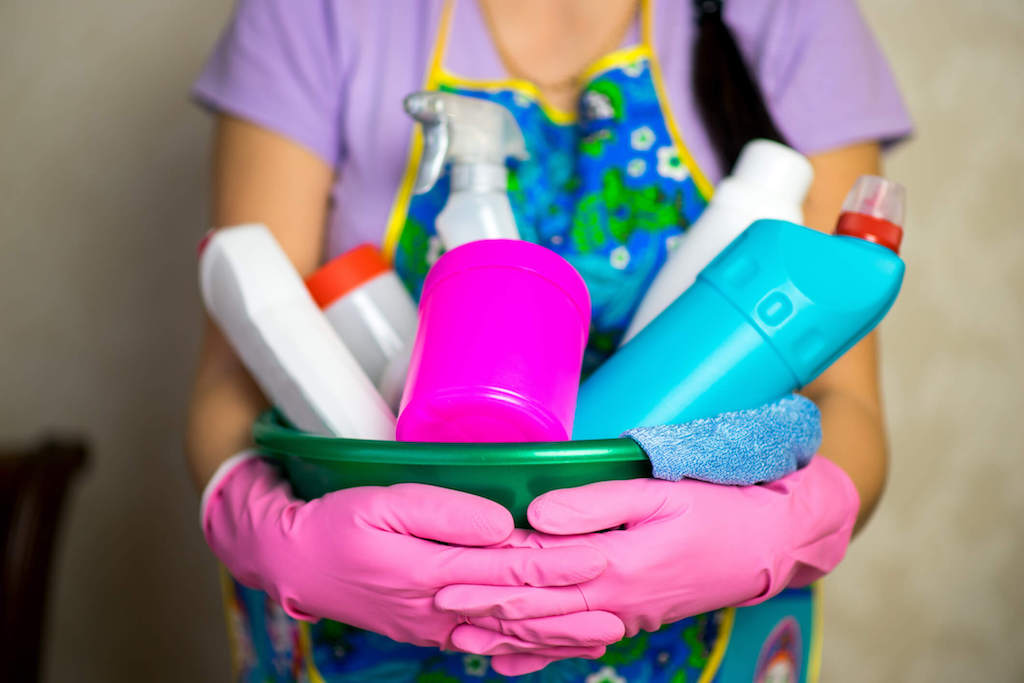
Keep in mind, exposure to these particles doesn’t just include the ones we inhale; it also includes any that we come into contact with through touch. Cue a cleaning extravaganza!
To reduce mold exposure as much as possible, you’ve got to clean as much as possible to remove as many of them as you can from a home. This includes hard surfaces, couches, clothing, dishware, appliances, etc. Everything and anything needs to be cleaned, and it needs to be cleaned thoroughly and correctly.
Proper cleaning should include:
- EPA-approved cleaning products that are capable of removing mold spores and mycotoxins
- A 3-stage wipedown technique to get rid of mycotoxins and any bacteria that may be present
- Microfiber towels (they’re 100 times better at picking up small particles, like spores)
- HEPA vacuuming of all surfaces (the filters can trap mold spores)
- Laundry additives (EPA-approved of course) for any machine-washable items
- Protective gear to minimize exposure to particles being kicked up into the air
Mycotoxins are more difficult to remove than mold spores because they adhere strongly to surfaces. That’s why a 3-stage wipedown is necessary to properly remove them from a surface and be able to clean them away.
Cleaning as much as possible can remove these harmful particles from the environment. Remember that mold doesn’t take days off, so cleaning as much as you can when you can is crucial. It's also important to know the best way to clean porous and non-porous items (one is more difficult than the other).
An added bonus is that eliminating as many spores from the environment as possible also decreases the chances of a spore finding another habitable location. This leads us to the next step in reducing spore volume within a home and reducing mold exposure.
2. A Clean House Means Clean Air: Aka, Air Purification!
Back to picturing that mold colony. You know those dust particles you see shining like a glitter bomb in a ray of sunlight peeking through the window? Mold spores and mycotoxins are among those particles, but you can’t see them because of their small size, and most remain trapped within the walls of the home.
To give you an idea of size, the average human eye can see particles around 40 microns in size. A single micron is one-millionth of a meter. On average, mold spores are 1-20 microns and mycotoxins are 0.1 microns. That’s pretty minuscule.
They’re also small enough to make their way into your lungs, which is a health no-no.⁹ Hence why it’s important to remove them.
As the mold continues to grow, the volume of these particles in the indoor air will continue to rise, much like the current housing market prices. To make matters worse, the growing number of particles on the surfaces of the home or attached to dust will be kicked up more frequently too and redistributed into the air when they’re disturbed.
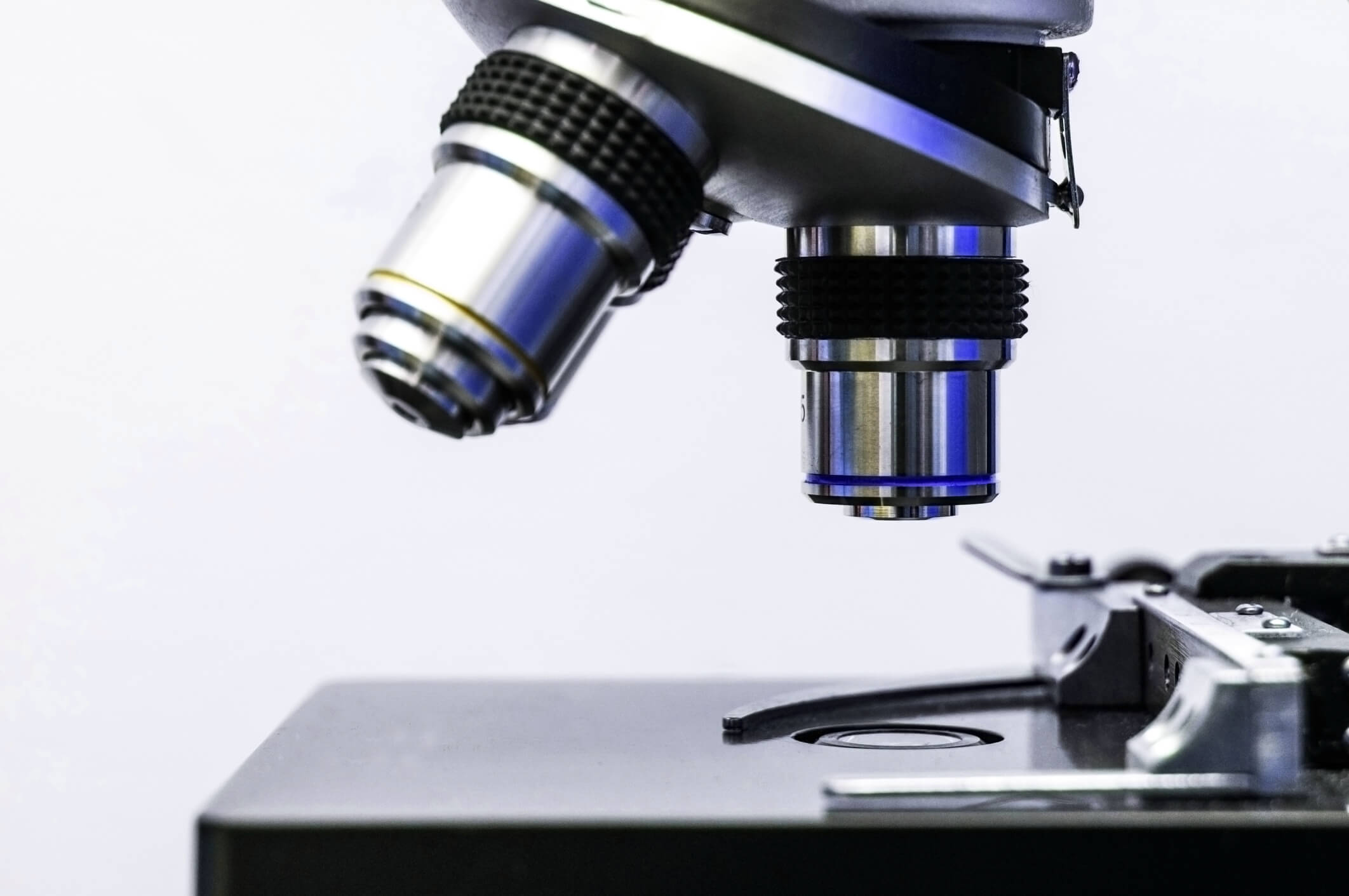
This is bad news for two reasons: 1) it weakens your immune system, and 2) it increases the likelihood that one lucky spore will find another location to start growing, resulting in the addition of another spore factory in your home. Air purification helps to mitigate these problems and reduce mold exposure.
There are a few steps for air purification within a home, and they involve technology that can filter out teeny-tiny particles.
Air purifiers are phenomenal tools to filter out particles like mold spores and mycotoxins from the air. Choose a brand that guarantees the removal of as small particles as possible the majority of the time. Also, pay close attention to the size suggestion for the device; some operate best in a small room, and others are capable of filtering the air in the entire home. I personally recommend Intellipure products because they remove 99.99% of harmful viruses, molds, and bacteria down to 0.007 microns in size. To put it into perspective, a strand of human hair is around 70 microns in size, which makes this technology incredible!
The purifier will filter out these harmful particles from the air and replace them with clean, filtered air. Again, make sure to keep in mind the room size suggestion to ensure maximum cleaning opportunity.
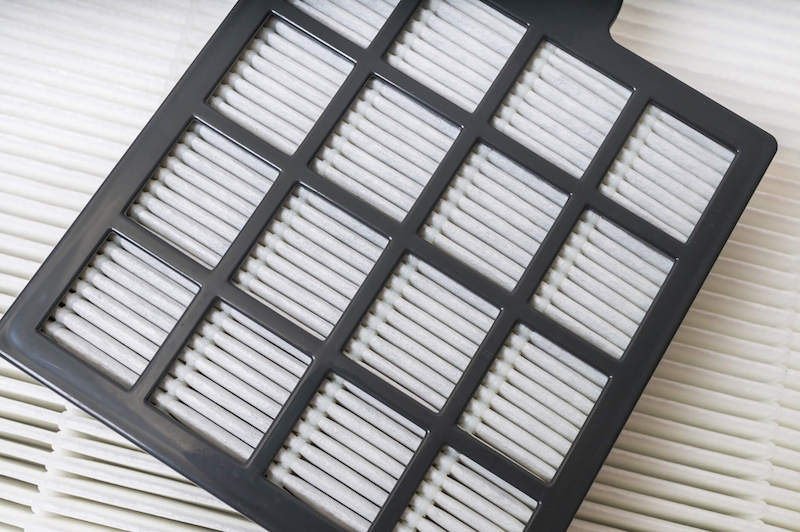
The second step is to replace the filters in the HVAC regularly and with HEPA filters. To reach the EPA standard and be qualified as a HEPA filter, they must filter out 99.7% of particles that pass through that are 0.3 microns in size.¹⁰ When you’re dealing with mold spores, which are typically between 1 and 20 microns in size, these filters are crucial. Others may not filter out these tiny particles and just redistribute them into the air of the home. Regularly change out the filters as well, so the particles don’t build up and affect the filter’s ability to purify the air.
The goal of this air purification technology in homes with mold growth is to decrease the number of contaminants that can wreak havoc on the body and the home as much as possible. In short, we are working to reduce mold exposure.
By removing the particles in the air, the immune system is fighting fewer invaders and the chance of more moldy problems doesn’t increase at such a drastic rate.
3. Don’t Make Yourself At Home: Aka Decreasing Moldy Opportunities
Mold spores are bad house guests. They come in unannounced, never want to leave, eat everything in sight, and disrupt your daily life. Honestly, it’s just rude.
To make it even worse, once they settle in, they create more spores that roam all over the home, which will also settle in for the long haul if they’re given comfortable conditions.
A dream home for a mold spore includes four simple things:¹¹
- Oxygen (they require very little, which is why they can live in the walls)
- Food (they’re trash pandas and eat everything and anything)
- Temperature (most enjoy a balmy 40-90 degrees Fahrenheit, but some species can live in extremes)
- Moisture (the key ingredient for life)
The first three aspects are easy to come by inside a home. Moisture, on the other hand, is what’s often missing. When there’s mold growth in a home, pumping spores into that indoor space, the last thing you want is one of those spores finding another habitable space. They’ll put down roots and start pumping even more spores (and potentially toxins) into the air, which decreases the air quality further and ramps up exposure to anyone in the home.
Decreasing these potential moldy homes is crucial. The last thing you want to do is fight a battle on multiple fronts against multiple enemies. It’s exhausting just thinking about it. Plus, there’ll be even more you’ll have to remediate down the road, and more remediation means a higher cost.
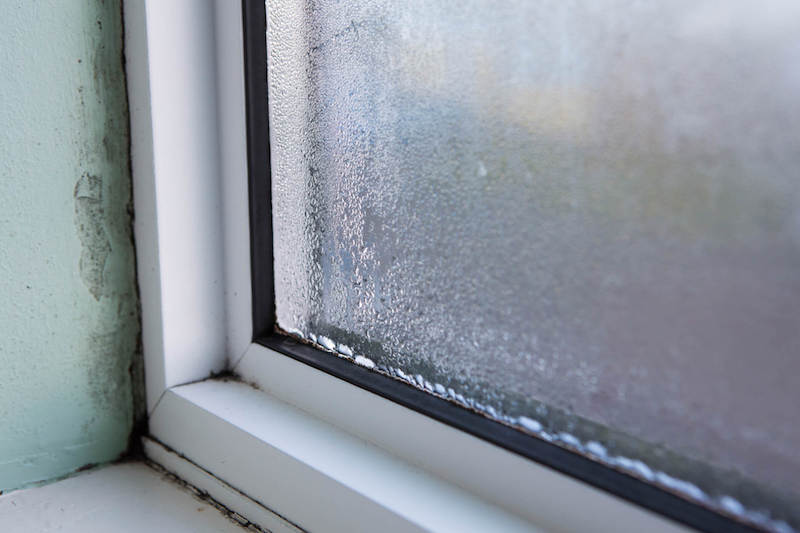
Mold prevention and reducing mold exposure start with cleaning to eliminate as many food sources as possible for this fungus, but the main battle will be to reduce wet opportunities within the home. This fungus only takes 24–48 hours to grow, so any wet or slightly damp area for that time frame can leave the door open to spores growing.
These water prevention steps can include:
- Maintain humidity levels between 30% and 50%.¹²
- Wipe up spills immediately.
- Regularly check for leaks and fix any you come across asap.
- Inspect the roof often for any problems.
- Don’t open doors or windows when it’s raining.
- Turn on bathroom ventilation and crack a door while showering.
- Always use kitchen exhaust fans while cooking.
- Dry out appliances thoroughly after use.
- Wash and dry wet items in the bathroom (like towels and bath mats).
- Inspect exterior windows for any gaps caused by loose caulking or cracks.
- Take a look at the grading around the outside of the home to make sure it’s not sloped towards the house.
- Inspect any patios or decks that are connected to a home. Make sure it’s counter-flashed properly so no moisture can get inside.
- Protect the home’s HVAC system so the coil doesn’t allow for mold growth in the condensation that builds up.
- Install a dehumidifier if necessary.
This isn’t an exhaustive list, but it’s a great way to get started on water-proofing a home. Also, don’t try to tick off every box in one day! Remember, one step at a time is the best way to beat mold, keep your sanity, and reduce mold exposure. It’s never a bad idea to reach out to an expert for any questions or suggestions on more preventative actions you can take.
4. Vent and Let It All Out: Aka Up That Ventilation
This step is sort of a combination between air purification and moisture prevention, but it’s so important that it made it onto the list.
Just to recap, most of the spores and toxins released by colonized mold growing inside stay within the walls of that home, which is not good for your air quality or your health. Poor ventilation helps keep all of those particles in the same area, which leads to a high volume of spores and toxins in a relatively small space!
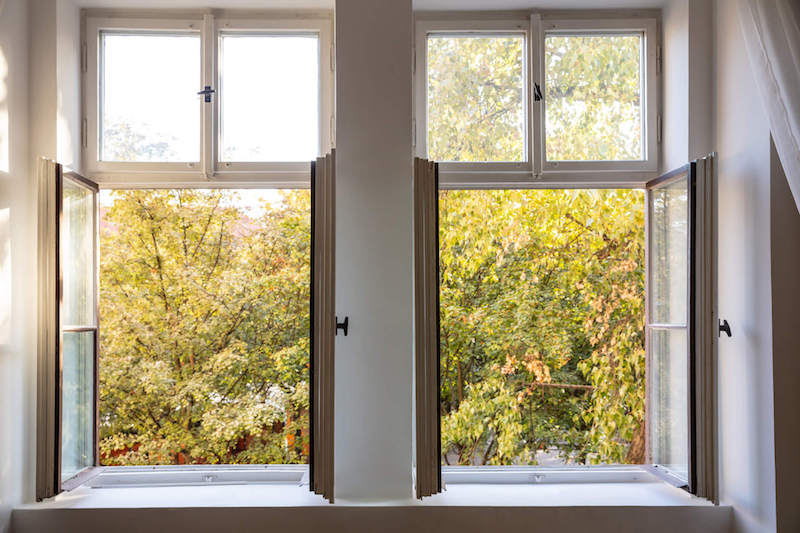
That’s why it’s important to get them out of the air as much as possible and replace that air with clean, fresh air that has far fewer particles. When you breathe in this air, there will be far fewer spores and toxins making their way into your body.
To achieve this, a good option is to open the doors and windows on a dry, non-humid day. The air outside has far fewer spores and byproducts than a home with mold growth, so replacing it with cleaner air will help improve the air quality and reduce mold exposure. Keep a close eye on the humidity levels inside of the home, though, to make sure condensation doesn’t build up from a drastic temperature change or humidity level change.
The HVAC will also play a huge role. It will help filter particles from the air and also regulate temperature and humidity levels. Make sure that it’s the right system for the home, it’s operating properly, the filters are changed regularly, and that there are no leaks.
Focusing on increasing ventilation also helps remove any moisture that could lead to mold growth, making it a win-win. As mentioned before, this includes turning on exhaust fans in the bathrooms and kitchens when in use to avoid added humidity in the air and making sure the vents go outside, not into the attic. That leaves the door wide open for wet, moldy opportunities. Make sure that they’re also the right size for the room.
Collectively, this will work to reduce mold exposure.
5. Give It Some Space: Aka Stay Away From Home When You Can
The best way to reduce mold exposure and the adverse health effects that come with it is to avoid the triggering environmental factor. In this case, this means avoiding the indoor mold growth.
If you can leave your home and stay with a relative or friend, or even rent a different place for a few months, go with this option. The best way to deal with exposure is to remove yourself and your family from the problem. That way, you can focus on detoxing the body without reintroducing the particles right back into it every day.
All of that being said, this isn’t always an option for a variety of reasons. In this case, try to stay out of the home as much as possible. Go to friends’ homes, frequent the park, sit outside on a porch, or do whatever else you can to stay busy and away from the indoor mold growth. It’s not a perfect scenario, and it’s not foolproof, but the goal is to minimize exposure as much as possible during this time. More exposure can lead to more toxicity in the body, more chances for the immune system to get bogged down, and an increasing number and severity of symptoms.
To lighten that load, avoiding the moldy particles floating around in the air is paramount.

Combine this with steps 1-4, and you’ll have a home with as few harmful particles as possible and fewer opportunities for them to make their way into the body.
Remind Yourself That You WILL Get Through This
The absolute main takeaway from this should be that this is just part of the journey. It’s not the end and it will not last forever. Dealing with indoor mold growth genuinely is about maintaining a good understanding of the fungus, how to minimize exposure, and doing what you can when you can. It’s been said a few times so far, but it’s so important that it settles into the brain. Not being able to tackle a remediation project immediately doesn’t mean you’re failing or that it’s the end of the world. On the contrary, you know that there’s indoor mold growth in your home! You have an answer to ongoing symptoms, you know what the enemy is, and you’ll know exactly what to do about it. That’s a great thing! Some individuals suffer from mold exposure for years before they find the answer.

If you ever have any questions, reach out to me, Michael Rubino, other experts, or anyone who has been through similar situations. The Mold Talks series offers a look into the lives of dozens of individuals who have lived through mold exposure and have gotten to the other side. Together, we’ll create a community of acceptance, helpful suggestions, advice, and moral support for dealing with indoor mold growth and poor air quality.
So, I hope you will choose to look on the bright side of the situation. You know what you’re up against. You aren’t alone. You will get through this. One step at a time.
Citations:
- Environmental Protection Agency. (n.d.). Mold. EPA. Retrieved from https://www.epa.gov/mold.
- Centers for Disease Control and Prevention. (2020, August 11). Basic facts about mold and dampness. Centers for Disease Control and Prevention. Retrieved from https://www.cdc.gov/mold/faqs.htm.
- World Health Organization. (n.d.). Mycotoxins. World Health Organization. Retrieved November 18, 2021, from https://www.who.int/news-room/fact-sheets/detail/mycotoxins.
- Brown, A. (2014, April 28). How Many Breaths Do You Take Each Day? [web log]. Retrieved October 8, 2021, from How Many Breaths Do You Take Each Day?
- Environmental and Occupational Health Assessment Program, & Environmental and Occupational Health Assessment Program, & Health Science Section, Mold Basics for Primary Care Clinicians (2009). Hartford, CT; Connecticut Department of Public Health. , H. S. S., Mold Basics for Primary Care Clinicians 1–10 (2009). Hartford, CT; Connecticut Department of Public Health.
- Curtis, L., Lieberman, A., Stark, M., Rea, W., & Vetter, M. (2004). Adverse health effects of indoor molds. Journal of Nutritional & Environmental Medicine, 14(3), 261-274.
- Bush, R. K., Portnoy, J. M., Saxon, A., Terr, A. I., & Wood, R. A. (2006). The medical effects of mold exposure. Journal of Allergy and Clinical Immunology, 117(2), 326-333
- Fisk, W. J., Lei-Gomez, Q., & Mendell, M. J. (2007). Meta-analyses of the associations of respiratory health effects with dampness and mold in homes. Indoor air, 17(4), 284-296.
- EPA. (n.d.). Particulate Matter (PM) Pollution. EPA. Retrieved from https://www.epa.gov/pm-pollution.
- EPA. (n.d.). What is a HEPA filter? EPA. Retrieved from https://www.epa.gov/indoor-air-quality-iaq/what-hepa-filter-1.
- Lstiburek, J., Brennan, T., & Yost, N. (2002, January 15). Rr-0208: What you need to know about mold. Building Science Corporation. Retrieved November 18, from https://www.buildingscience.com/documents/reports/rr-0208-what-you-need-to-know-about-mold/view.
- EPA. (n.d.). A Brief Guide to Mold, Moisture, and Your Home. EPA. Retrieved from https://www.epa.gov/mold/brief-guide-mold-moisture-and-your-home#tab-6.

